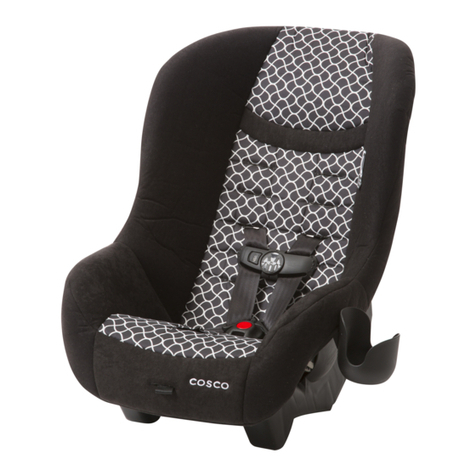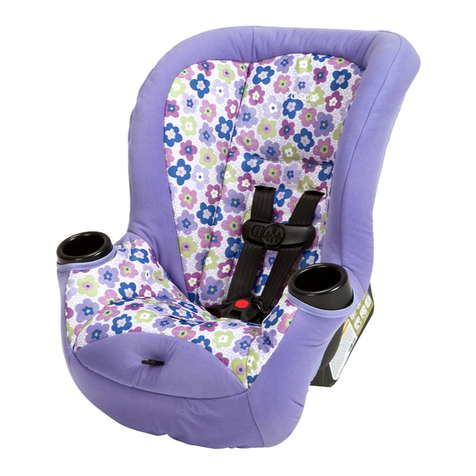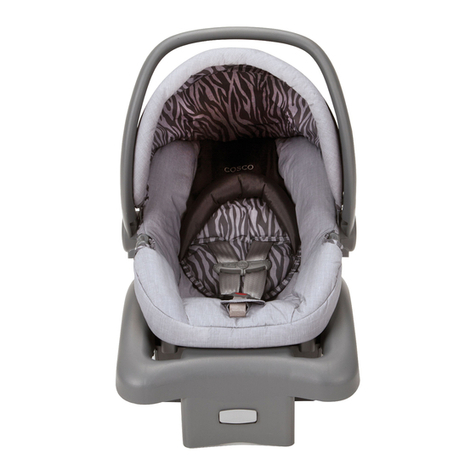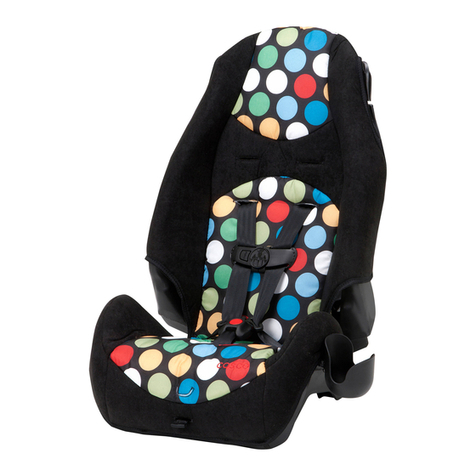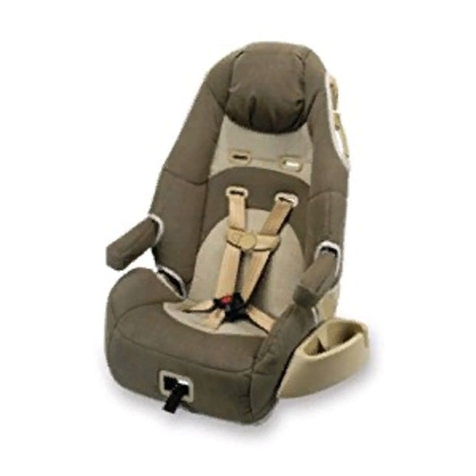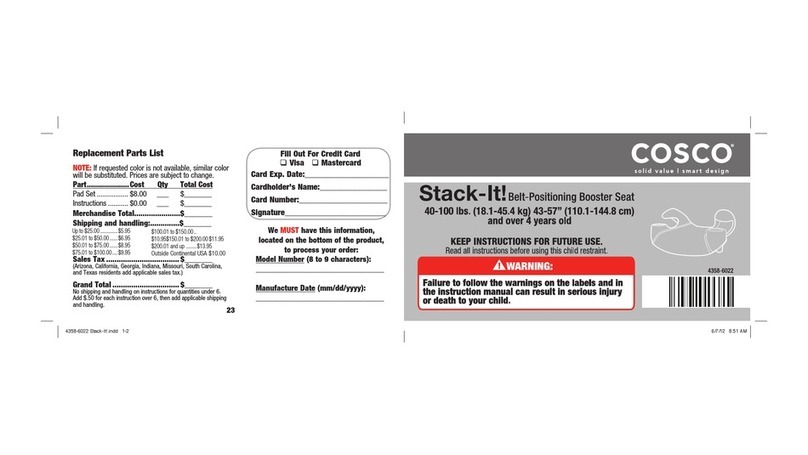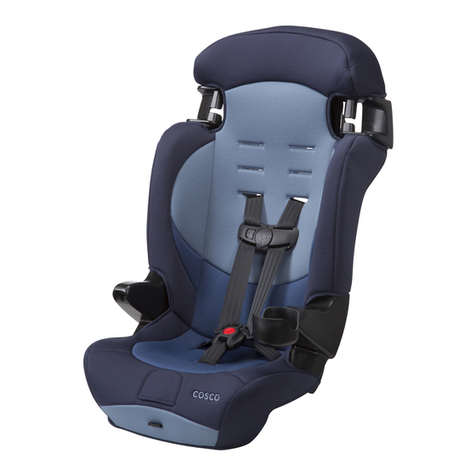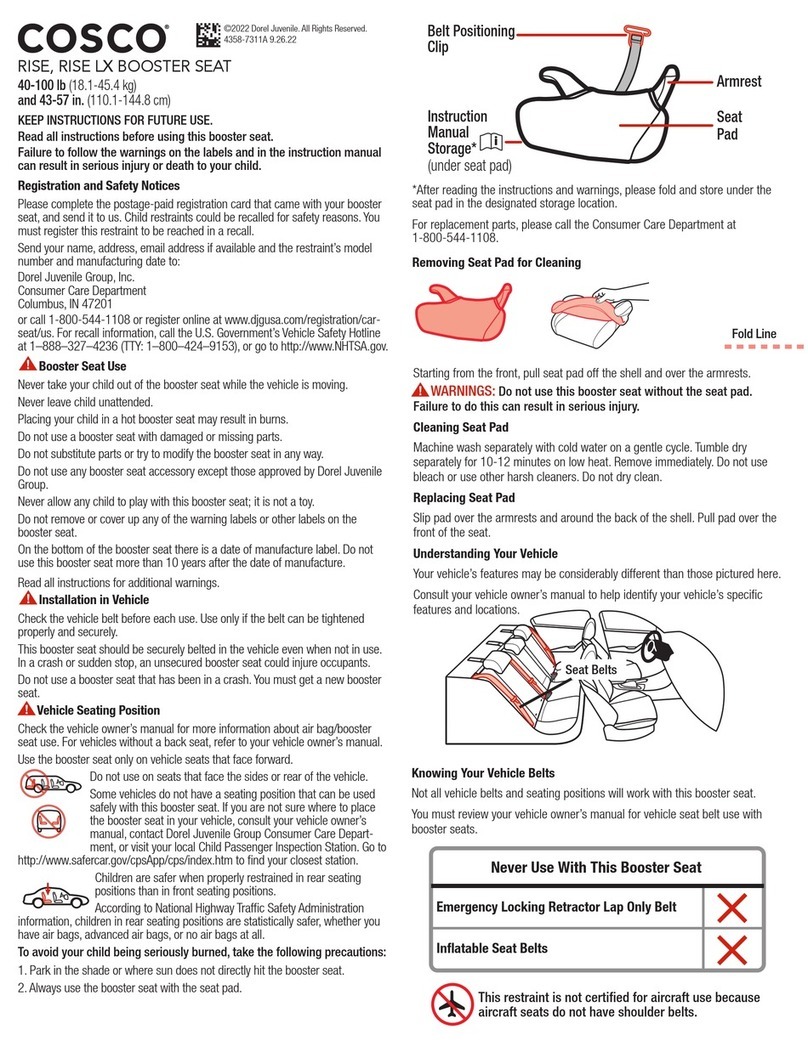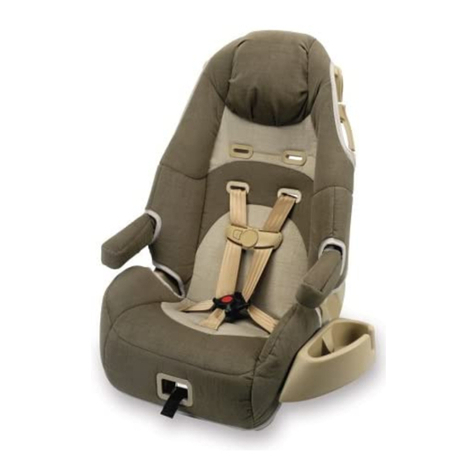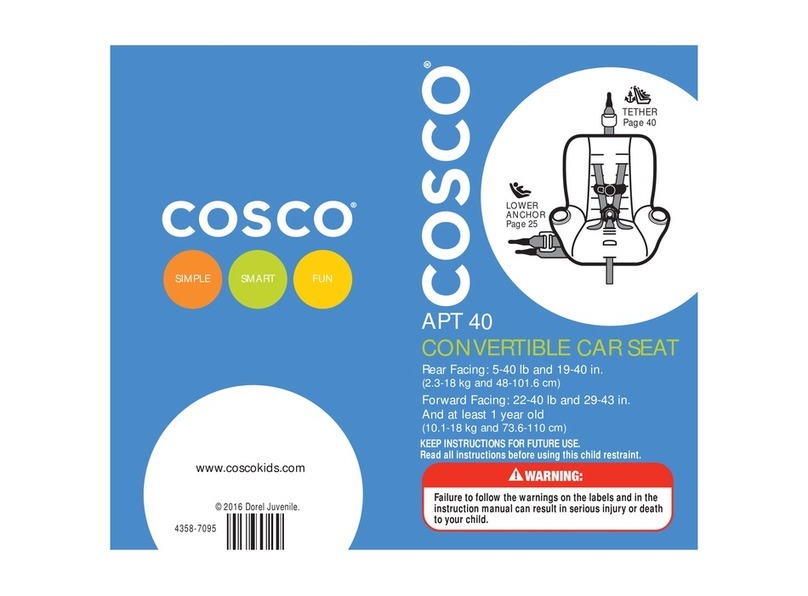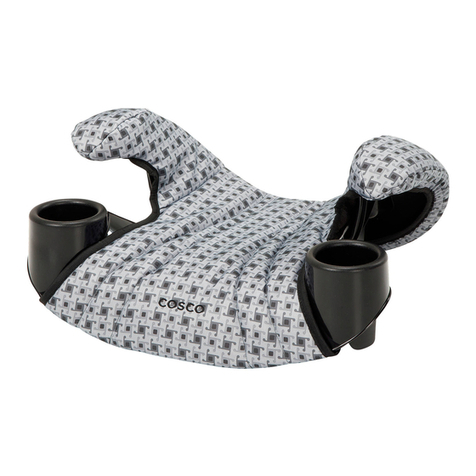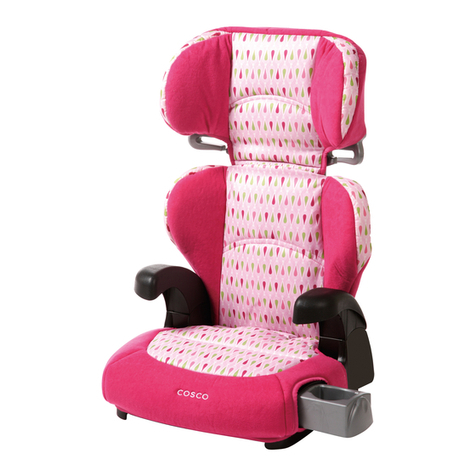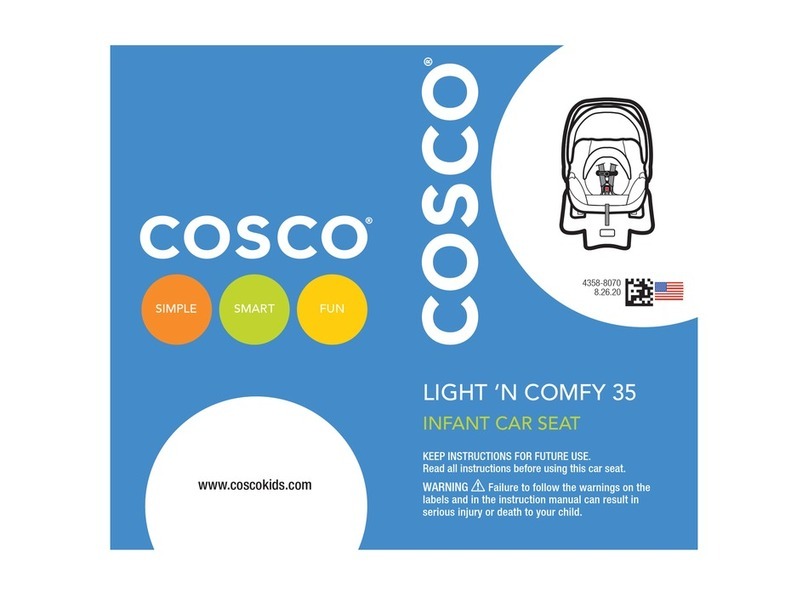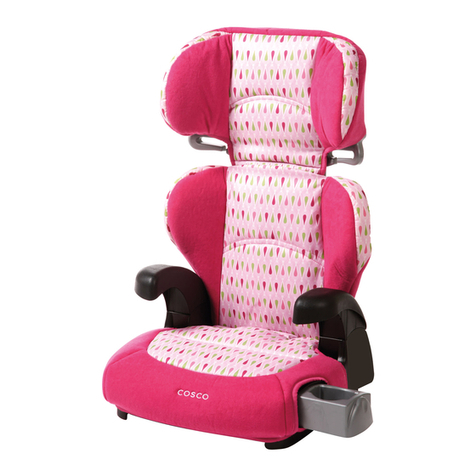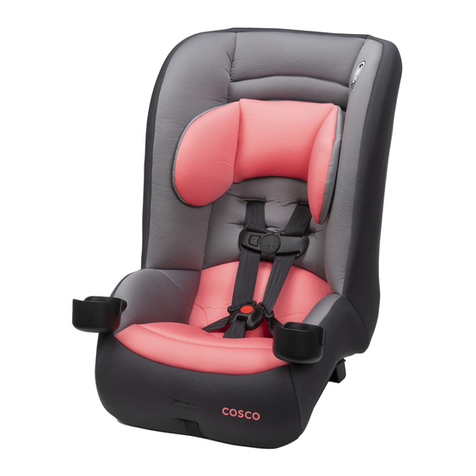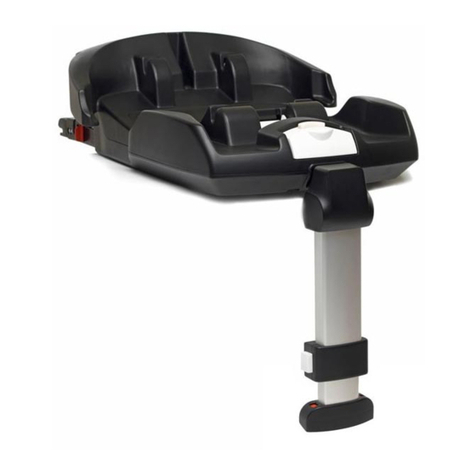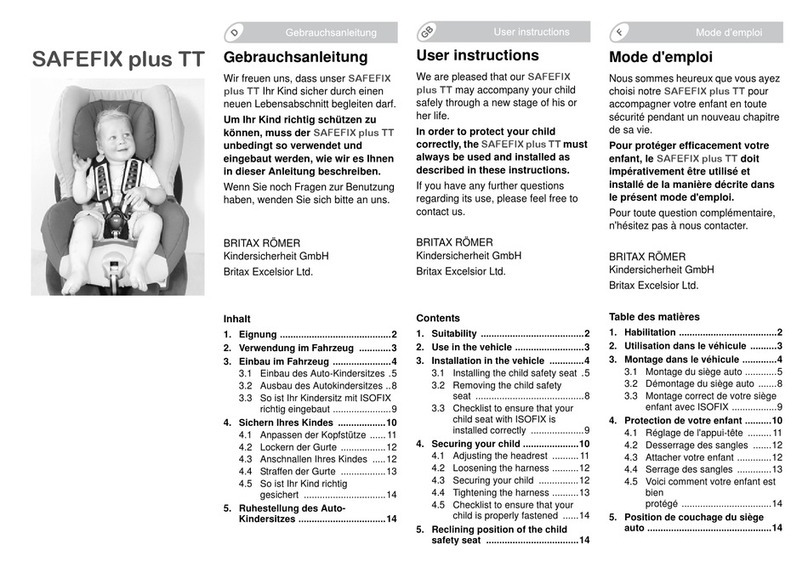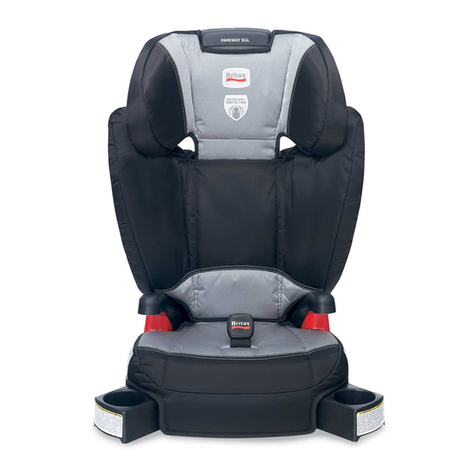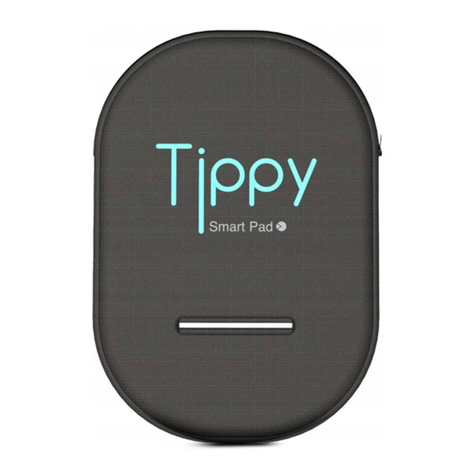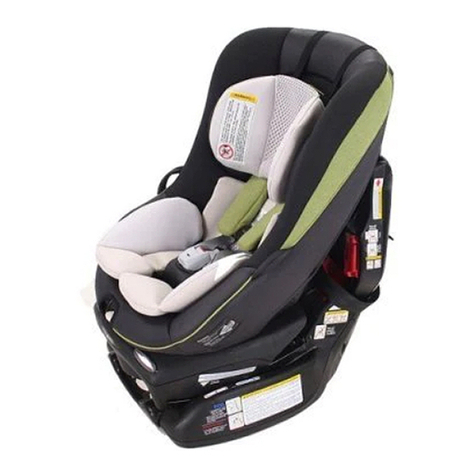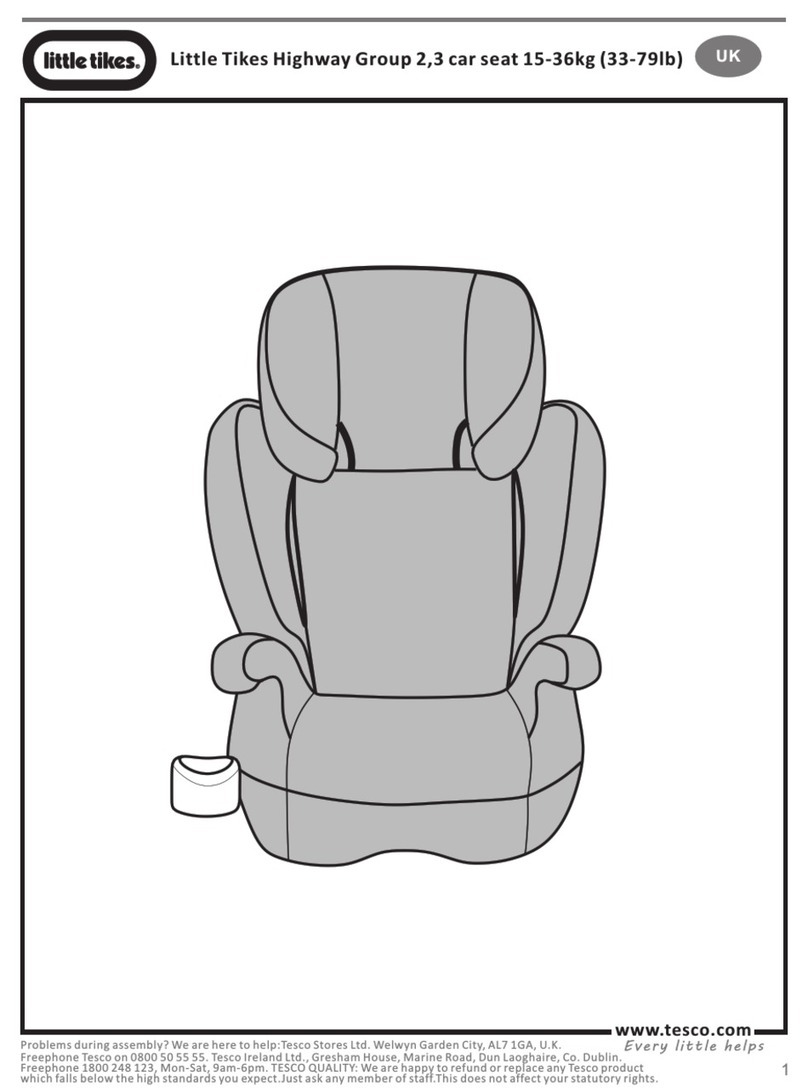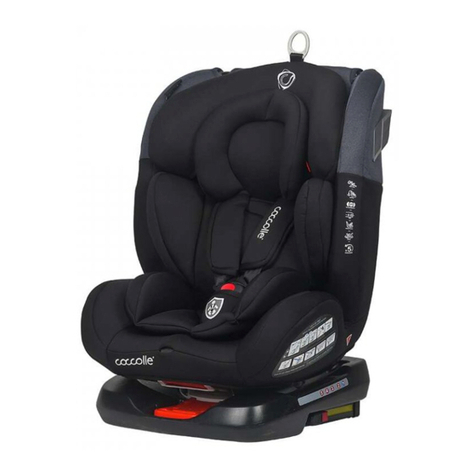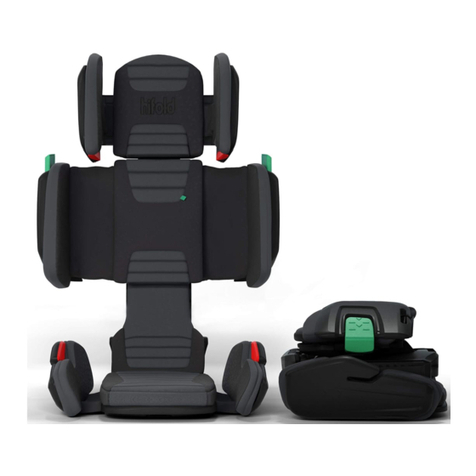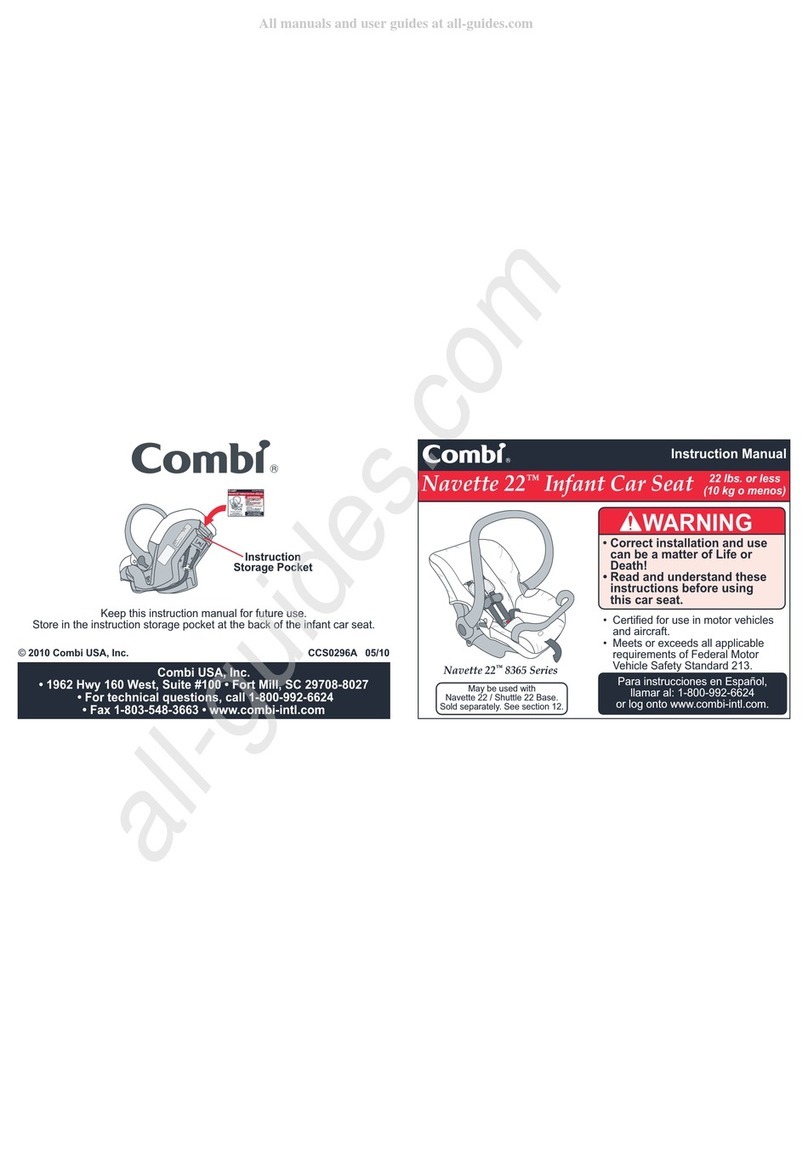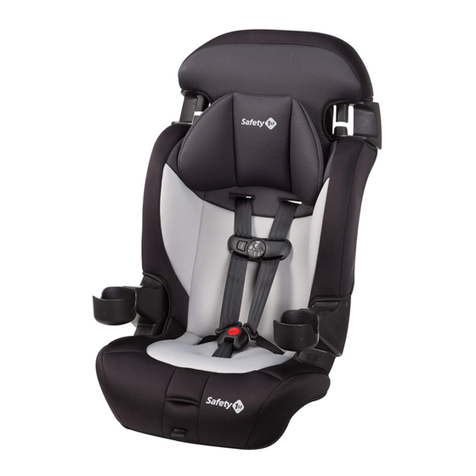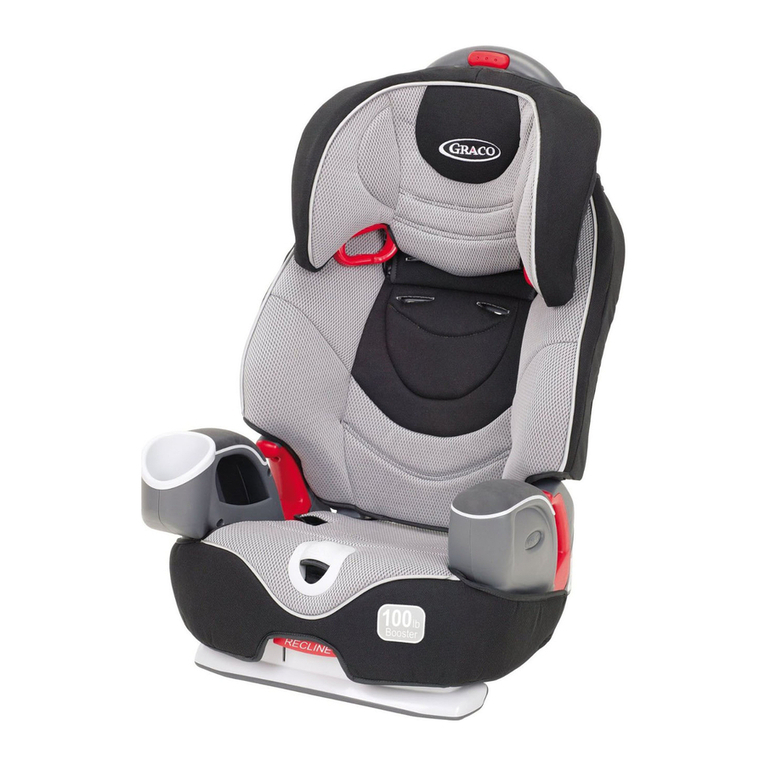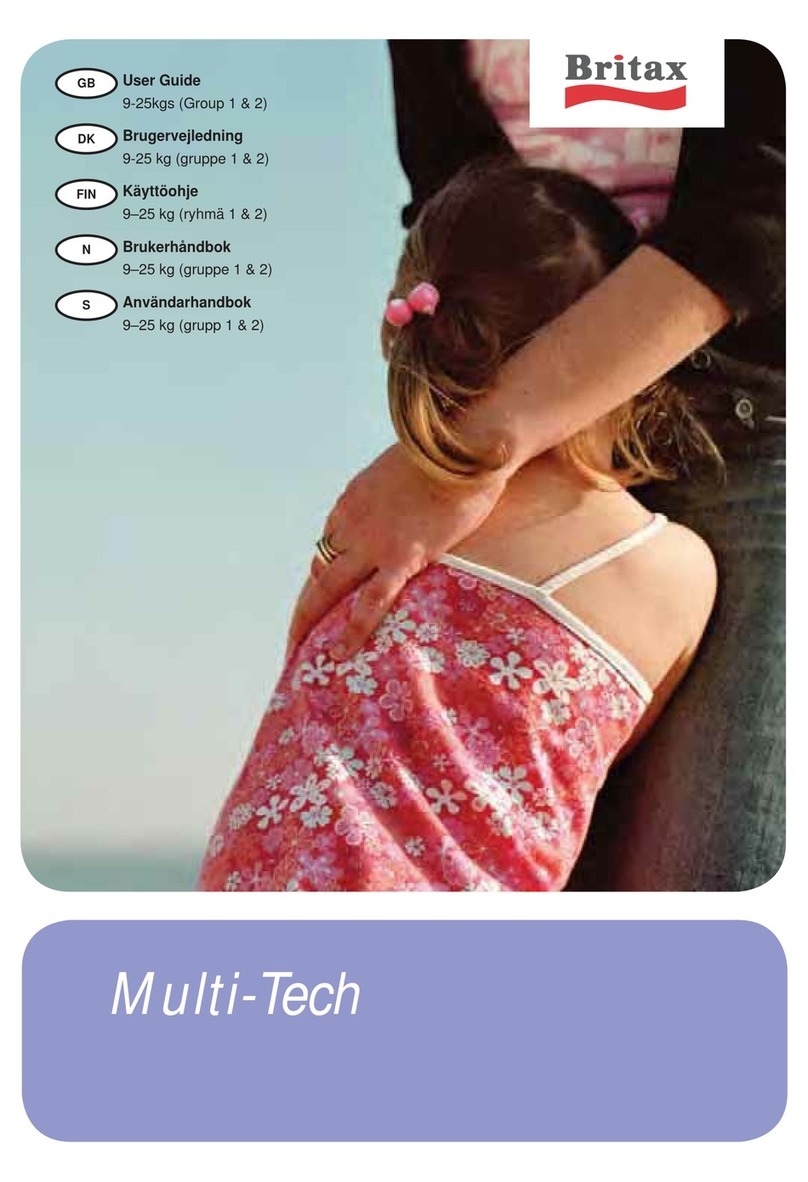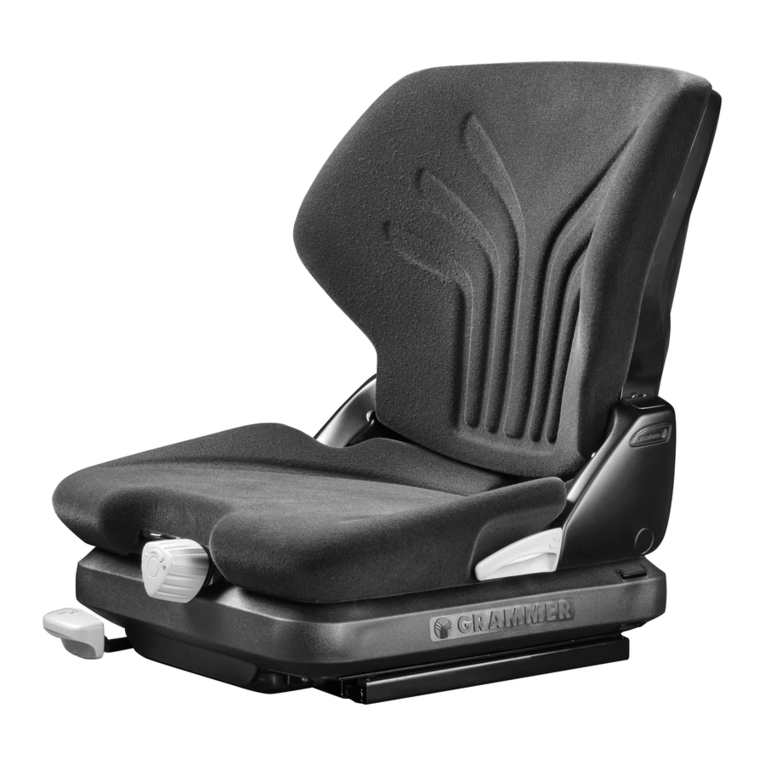
Contents
Getting Started
Parts of Car Seat................................................................. 1
Accessory Use ................................................................... 3
Choosing Car Seat Mode ................................................... 4
Preparing Car Seat for Child Fit............................................. 6
Rear-Facing Child Fit ......................................................... 7
Forward-Facing Child Fit ............................................................ 8
Making Adjustments to Car Seat
Changing Headrest/Harness Height ................................... 9
Changing Buckle Position................................................... 10
Harness System Adjustments For Smaller Infants................... 12
Reclining Car Seat .............................................................. 16
Choosing LATCH or Vehicle Belt
LATCH: Lower Anchor Use .................................................. 17
Vehicle Belts ...................................................................... 19
Tether Use .......................................................................... 23
Installation in Vehicle
Rear-Facing Mode ............................................................. 25
Vehicle Belt Install .............................................................. 26
LATCH: Lower Anchor Belt Install........................................ 33
Forward-Facing Mode ....................................................... 40
Vehicle Belt + Tether Install................................................ 41
LATCH: Lower Anchor Belt + Tether Install ......................... 47
Securing Child in Car Seat ........................................ 54
Booster Seat
Booster Seat Mode ............................................................ 57
Removing Harness System................................................ 58
Booster Seat Child Fit ........................................................ 61
Lap/Shoulder Belt Use ....................................................... 62
Car Seat Pad Use and Care
Removing Seat Pad Set for Cleaning ..................................... 64
Cleaning and Installing Seat Pad Set ................................ 66
Installing Harness System ................................................. 67
Safety Information
Aircraft Information .......................................................... 70
Replacement and Expiration of Car Seat ............................ 71
Child Restraint Use............................................................... 72
Installation in Vehicle............................................................ 72
Vehicle Seating Position ....................................................... 73
Registration and Safety Notices............................................. 74
Additional Information
Warranty ............................................................................. 75
Troubleshooting ................................................................... 76
Replacement Parts List ........................................................ 77
Dorel Juvenile Group Information........................................... 78
© 2019 Dorel Juvenile. All Rights Reserved.
